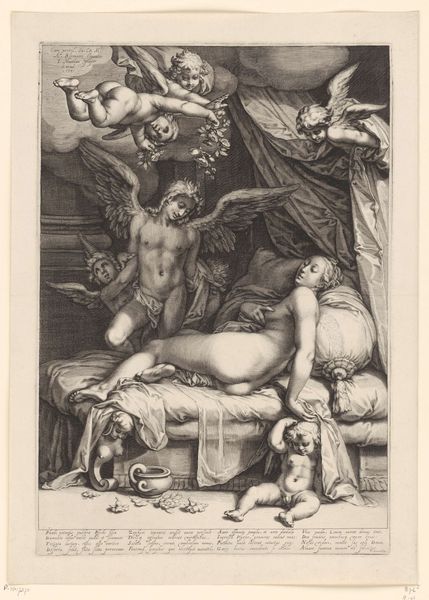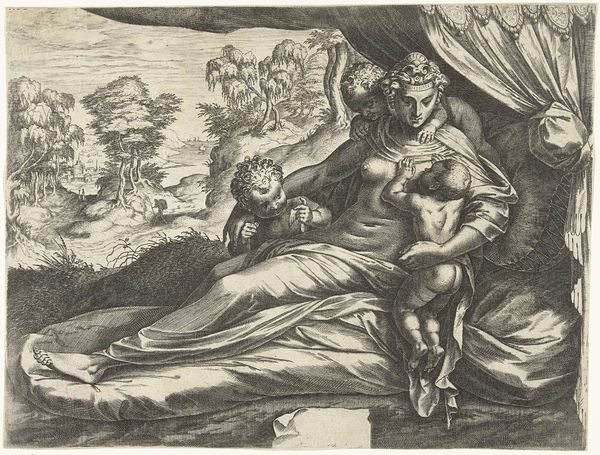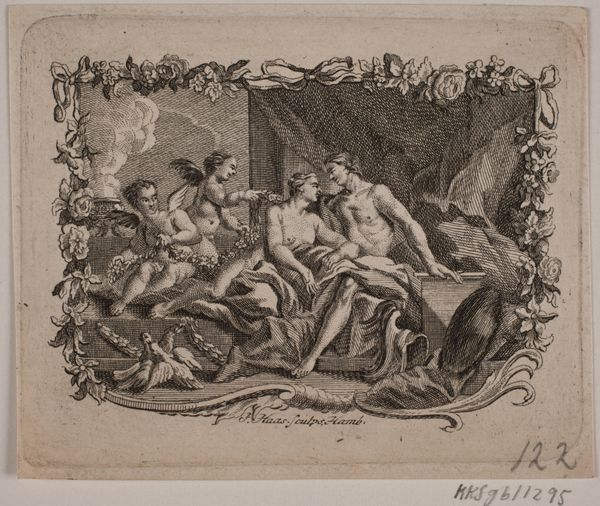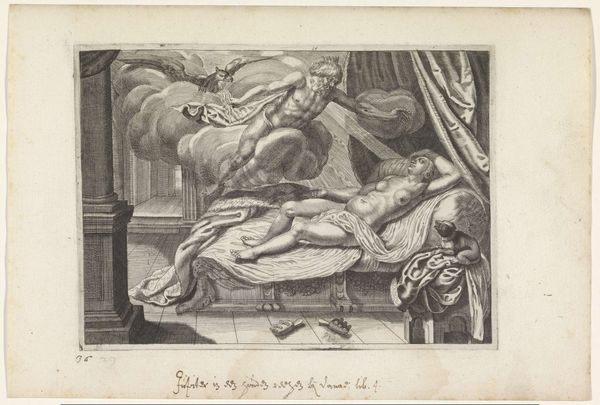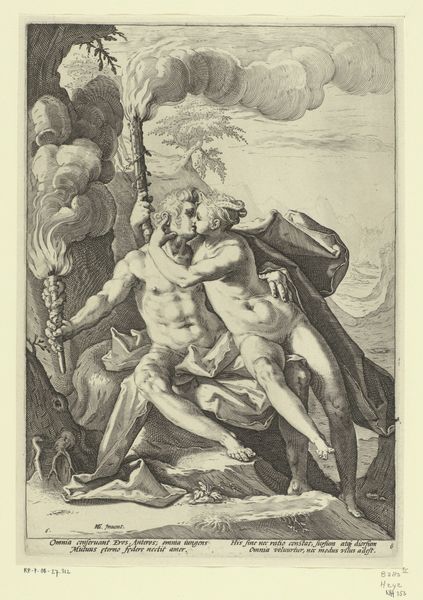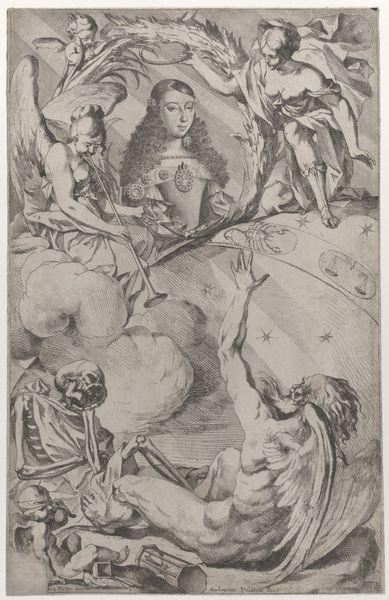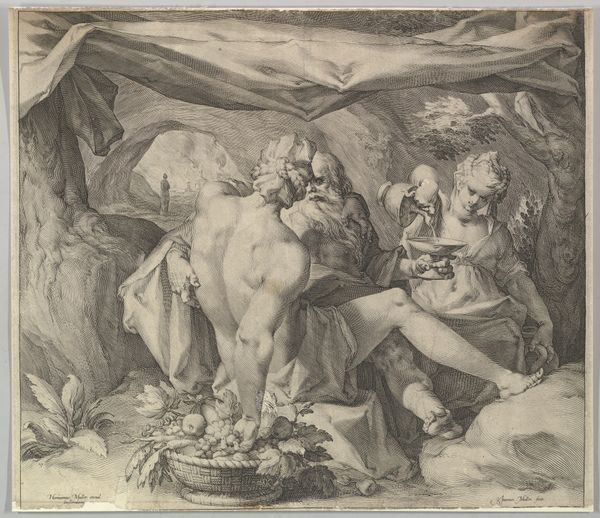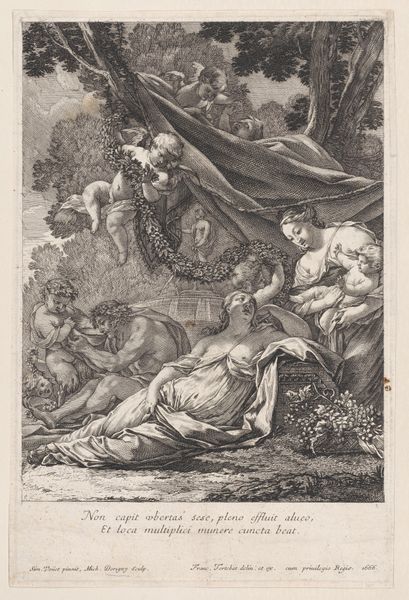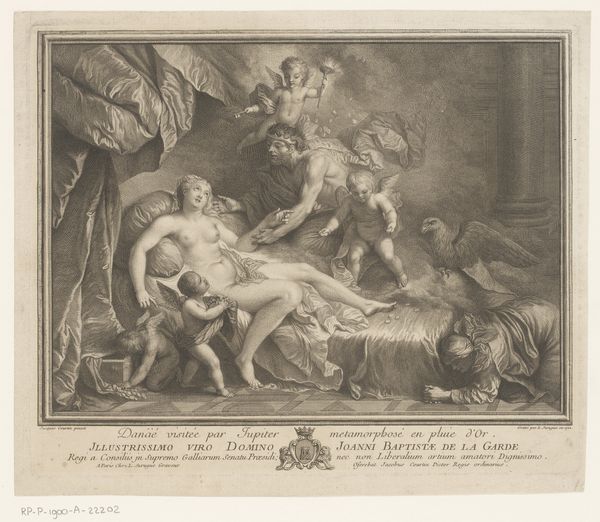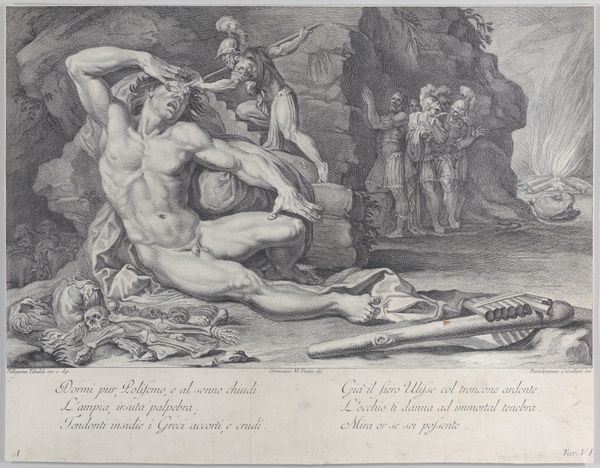
print, etching
#
allegory
#
baroque
# print
#
etching
#
figuration
#
line
Dimensions: 61 mm (height) x 78 mm (width) (plademaal)
Curator: Here we have "Vignet," an etching by Jonas Haas, likely created sometime between 1720 and 1775. It’s part of the Statens Museum for Kunst’s collection. Editor: Oh, my. The first thing I notice is the mood—it’s unsettling, dreamlike. The sharp lines almost make the figures vibrate. It’s got this theatrical framing device surrounding these bizarre figures, a sleeping cherub, an animated figure under a blanket, all bordered by elaborate rococo decoration. Curator: Precisely! The line work in etching lends itself well to the Baroque style, showcasing both the elegance and the tension that were prevalent during this period. Let’s examine Haas' technique here, notice the labor put in, he uses intricate details to produce complex scenes with the help of light and shadow effects through strategic biting. The level of details certainly reflects his mastery over the medium and aligns with the demands of the art market for detailed reproductive prints during that era. Editor: You're right. Thinking about production, I’m wondering if that tension between the subject matter and the craft itself highlights something of the unease within the era... you’ve got this idyllic fantasy presented with what feels like, underneath, a darker, slightly menacing vision. See that shrouded figure looming overhead! What are they guarding? Curator: Good eye. It plays into the allegorical theme. What could be hidden behind the curtains might signify different ideals and social commentary based on that period’s understanding. It makes one consider consumption too. Think about how many of these prints must have been made—did their ubiquity dull their symbolic potency or did it allow even the lower classes access to allegory, traditionally the preserve of the elite? Editor: That’s fascinating. This little vignette contains worlds of interpretation. All those layers and contrasts packed into such a small thing... a jewel of a disquieting dream. It’s that friction—of shadow and light, of craftsmanship and underlying emotion—that really holds my gaze. Curator: Indeed, Jonas Haas presented not just a decorative scene but offered a tangible piece deeply embedded into the cultural fabric of his time, one we can decode today and reflect on labor, materiality, class and culture in that historical era.
Comments
No comments
Be the first to comment and join the conversation on the ultimate creative platform.
